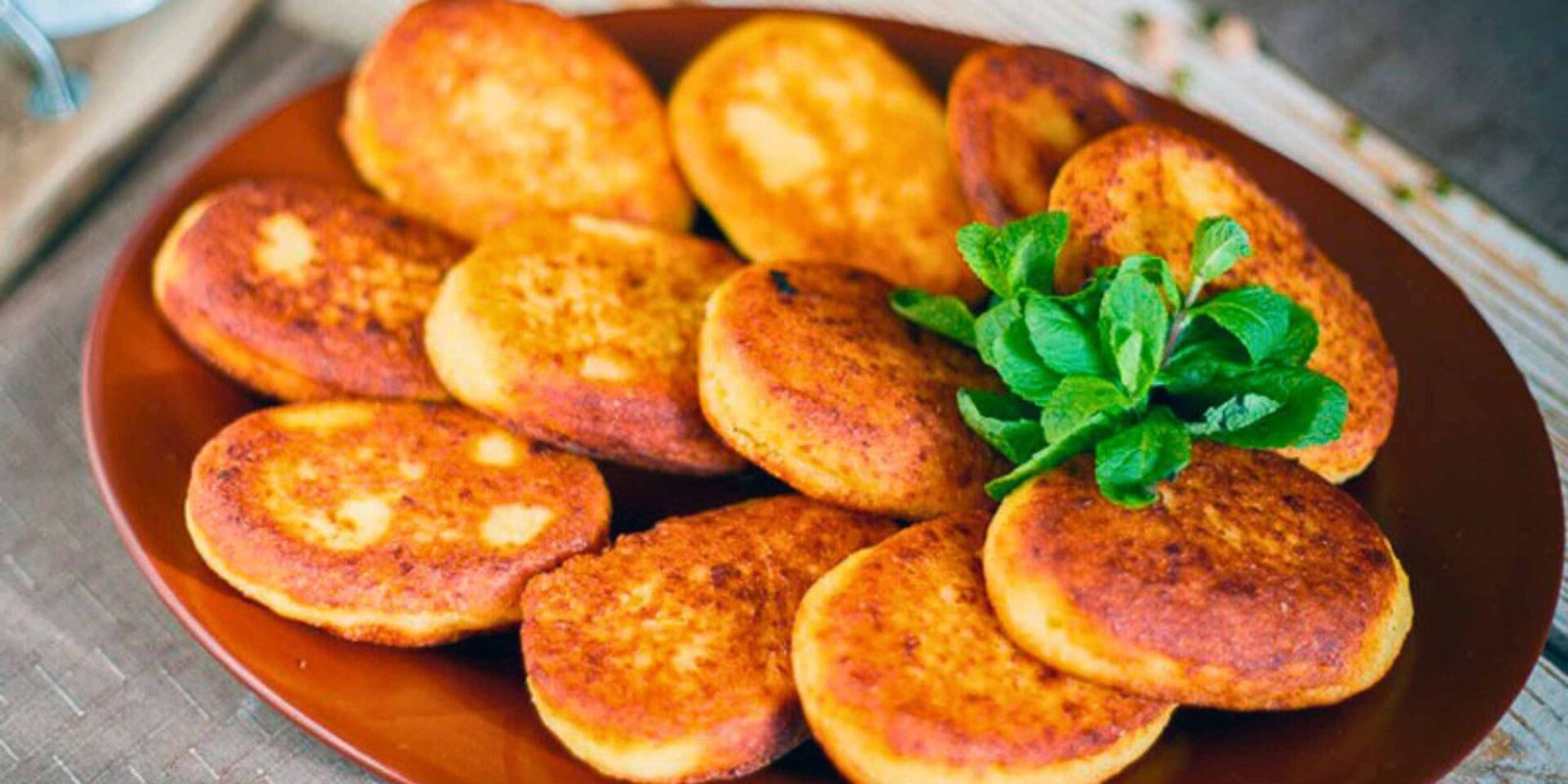If food could tell stories, Georgian cuisine would be a library of tales written in flavours. Picture yourself at a supra, which is a traditional Georgian feast. The table is overflowing with colourful salads, golden breads, sizzling stews, and desserts that taste like the countryside’s harvest. Every dish reflects centuries of history, a love for fresh produce, and the legendary warmth of Georgian hospitality.
Georgia, often called the cradle of wine, is also a paradise for vegetarians. From walnut-rich starters to cheesy breads and hearty stews, Georgian vegetarian cuisine blends tradition with bold flavours. From bustling markets to traditional supra tables, you can experience it all on a Transforming Travel’s guided trip to Georgia that blends food, culture, and adventure.
This guide takes you through some of the most iconic vegetarian-friendly dishes, structured so you’ll understand not just what they are, but also why they’re special and who will love them most.
Fresh Starters: Salads & Cold Plates in Georgian Cuisine
Fresh, colourful, and often walnut-based, Georgian cold starters prepare the palate for the feast ahead. Here are some of the best vegetarian-friendly options to begin your culinary journey.
1. Pkhali
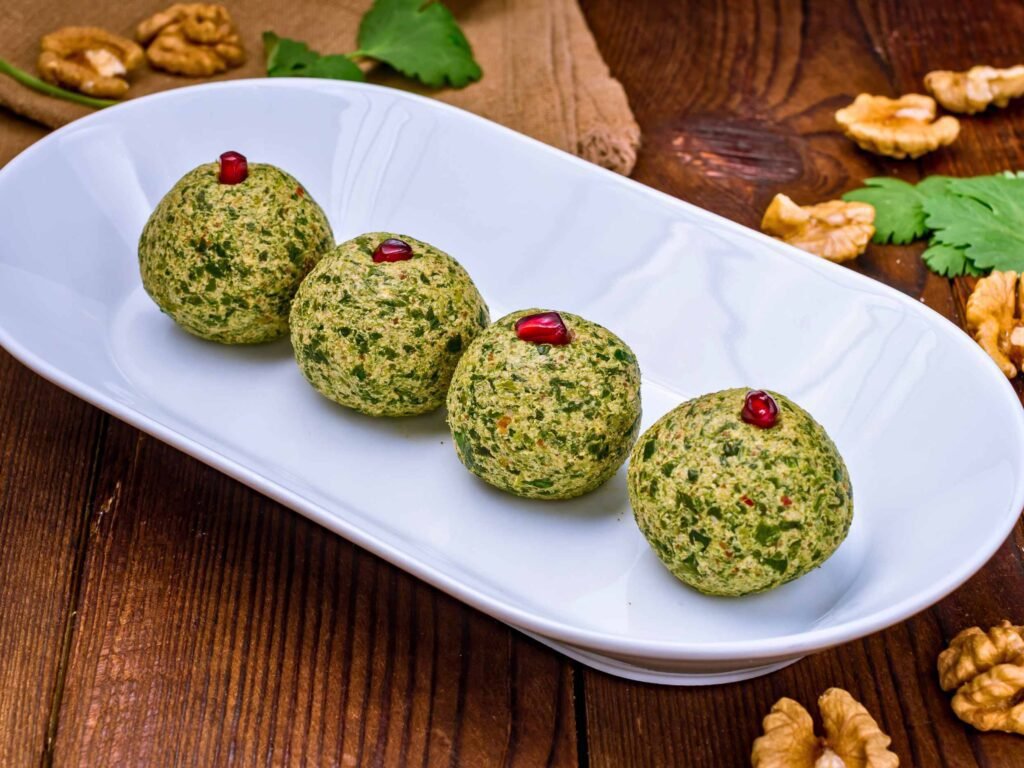
What is it?
Pkhali is a colourful variety of vegetable pâtés made from spinach, beetroot, cabbage, or even beans. The vegetables are finely chopped or pureed and blended with walnuts, garlic, onions, vinegar, and fresh herbs.
Why is it special?
The walnut base is what makes Pkhali so distinctive. Instead of relying on cream or oil, Georgians use ground walnuts to create a rich, nutty paste that coats the vegetables, resulting in a dish that’s both earthy and refreshing. Garnished with pomegranate seeds, it’s as beautiful as it is flavorful.
Who’s it for?
Perfect for vegetarians, vegans, and anyone who enjoys Mediterranean-style mezze or spreads.
2. Badrijani Nigvzit
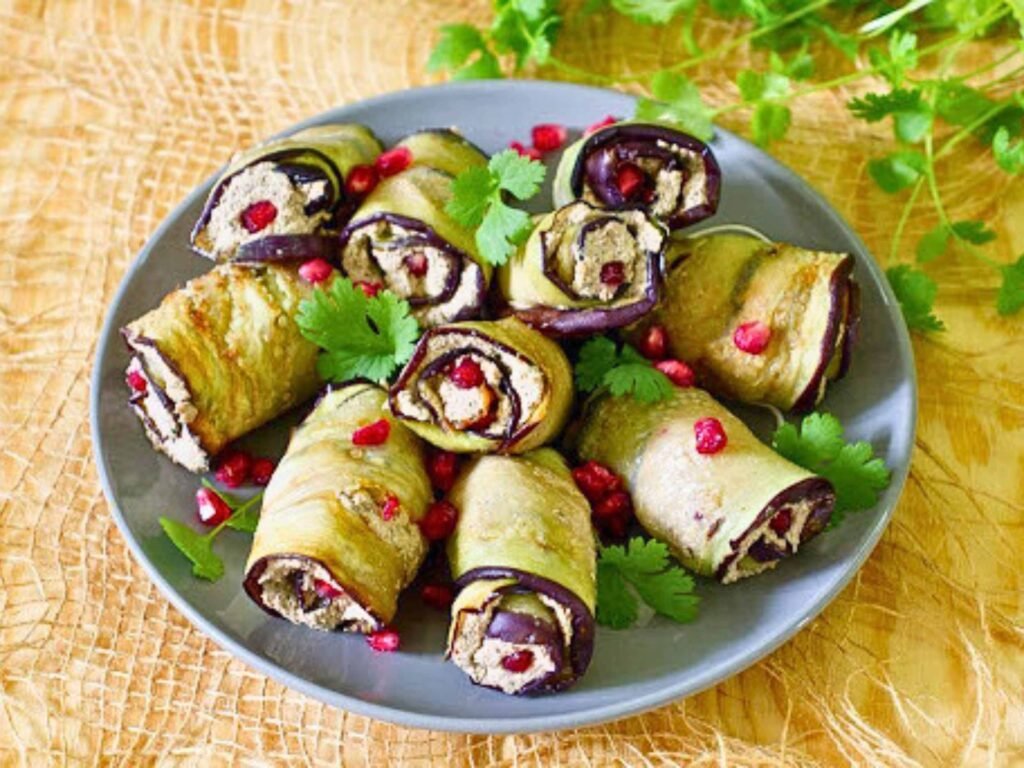
What is it?
Badrijani Nigvzit are fried eggplant slices rolled around a walnut-garlic paste, topped with jewel-like pomegranate seeds.
Why is it special?
The contrast of flavours is stunning: smoky eggplant, creamy walnut filling, sharp garlic, and the sweet-tart pop of pomegranate. It’s a staple of Georgian supra (feast) tables and reflects the Georgian genius for balancing textures.
Who’s it for?
A must-try for fans of Middle Eastern eggplant dishes, tapas lovers, and anyone who enjoys appetisers with bold flavours.
3. Georgian Tomato & Cucumber Salad
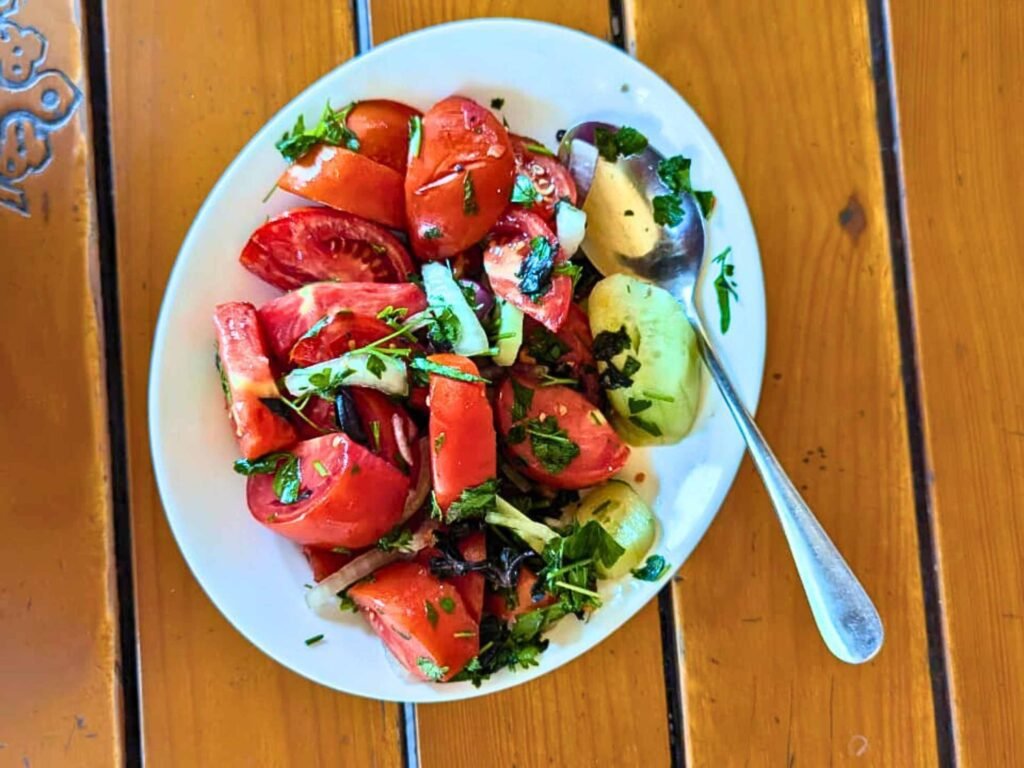
What is it?
This is Georgia’s signature fresh salad. Juicy tomatoes and crisp cucumbers tossed in a simple but rich walnut dressing.
Why is it special?
Instead of olive oil or vinaigrette, the salad dressing is made from crushed walnuts, garlic, and herbs. It’s creamy yet light, adding depth to the freshness of the vegetables. And one should know that Georgians really flaunt their tomatoes!
Who’s it for?
Ideal for salad lovers who want something beyond the ordinary, and those who appreciate fresh summer flavours with a twist.
4. Cold Lobio
What is it?
Cold Lobio is a refreshing bean salad made from kidney beans mixed with onions, garlic, coriander, and walnuts. Traditionally, it’s served in clay pots with cornbread.
Why is it special?
It’s hearty yet cooling, showcasing the Georgian ability to transform simple beans into a flavorful dish layered with herbs and spices.
Who’s it for?
Best suited for protein-conscious eaters, vegans, or anyone who loves Mediterranean-style bean salads.
5. Pickled Vegetables – Tangy Tradition of Georgian Cuisine
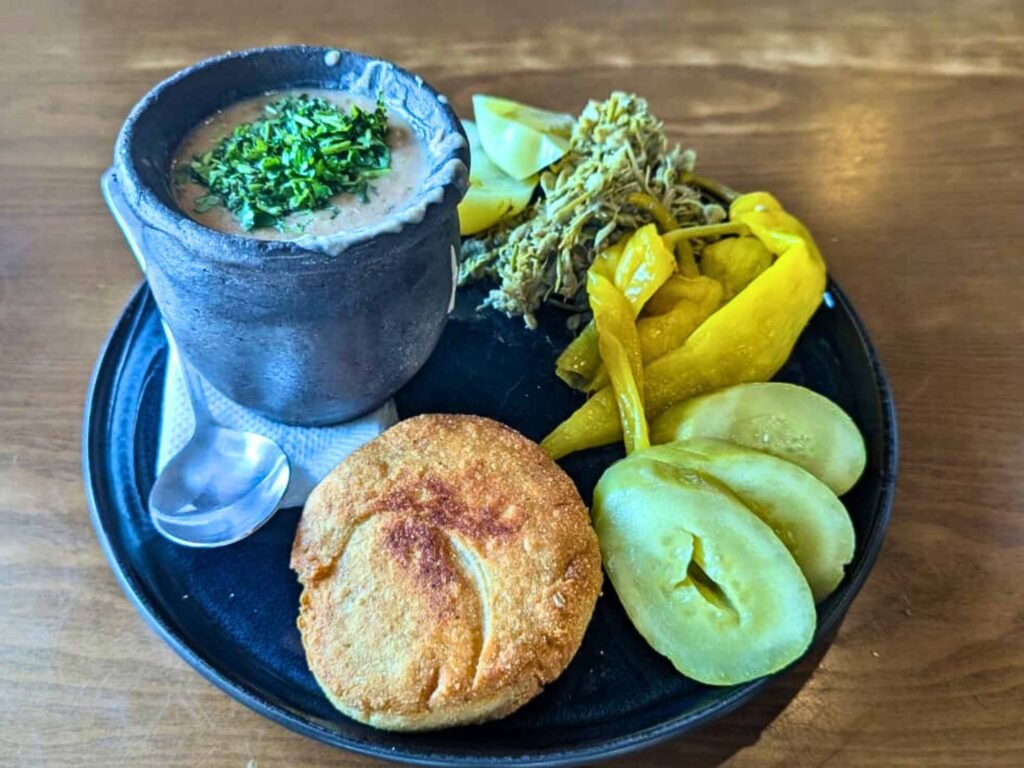
What is it?
Pickles in Georgia are more than a side dish. They’re a culinary tradition. They include cucumbers, green tomatoes, cabbage, garlic, and the iconic jonjoli (pickled sprouts of a wild shrub).
Why is it special?
Jonjoli is unique to the Caucasus, giving the pickles a flavour you won’t find anywhere else. These sharp, tangy bites cut through the richness of Georgian feasts.
Who’s it for?
Perfect for those who love tangy, crunchy snacks or need something refreshing alongside heavy main courses.
Signature Breads & Dumplings in Georgian Cuisine
After light salads, Georgian cuisine takes a heartier turn with breads and dumplings that are the pride of the country. These dishes show why Georgia is often compared to a bread lover’s paradise.
6. Khachapuri (Various Types) – Classic Cheese Bread of Georgian Cuisine
a. Imeruli Khachapuri

What is it?
A round bread stuffed with salty Imeretian cheese. Simple, comforting, and the most common variety.
Why is it special?
Its balance of chewy bread and gooey cheese makes it a universal comfort food.
Who’s it for?
Cheese lovers and anyone seeking an easy introduction to Georgian bread.
b. Megruli Khachapuri
What is it?
Similar to Imeruli, but with extra cheese sprinkled on top.
Why is it special?
It’s double-cheese heaven. Inside and out.
Who’s it for?
For those who believe there’s no such thing as too much cheese.
c. Adjaruli Khachapuri

What is it?
The famous boat-shaped bread is filled with melted cheese, topped with butter and a raw egg yolk.
Why is it special?
The ritual of mixing the hot cheese, butter, and yolk at the table makes it an interactive, indulgent dish.
Who’s it for?
Ideal for those who believe food should be both delicious and an experience.
d. Mkhlovana (Spinach Cheese Khachapuri)
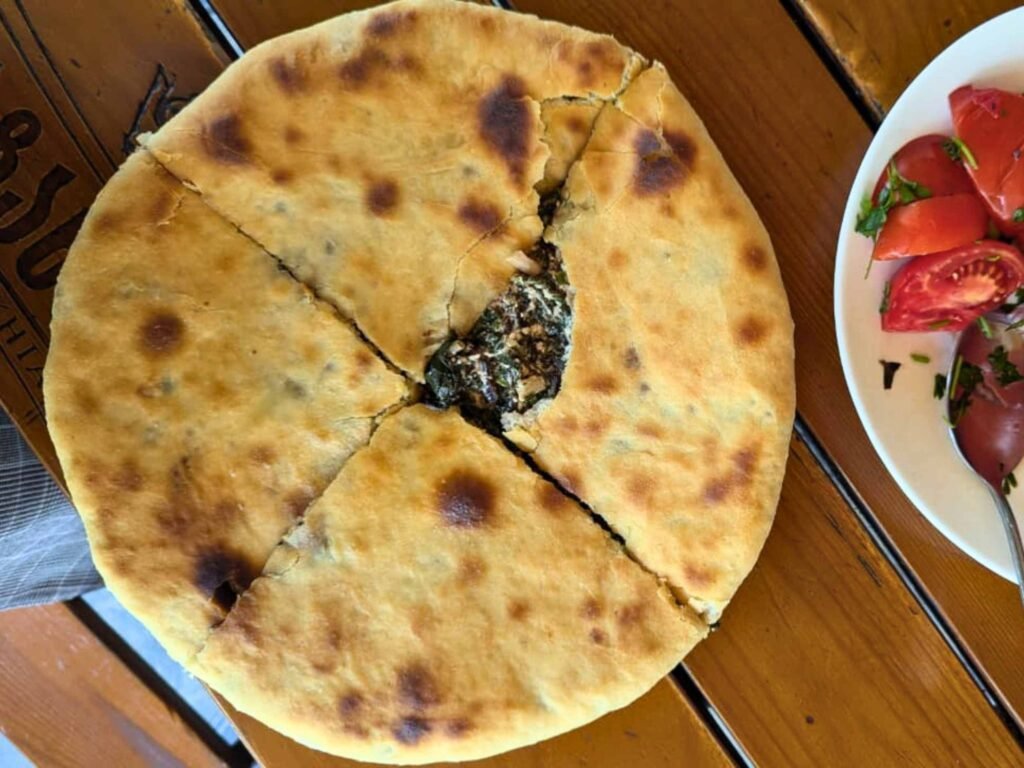
What is it?
A variation where spinach is mixed with cheese inside the bread.
Why is it special?
It adds a layer of earthiness to the usual cheesy indulgence.
Who’s it for?
Great for those who like a balance of greens with their carbs.
7. Mchadi
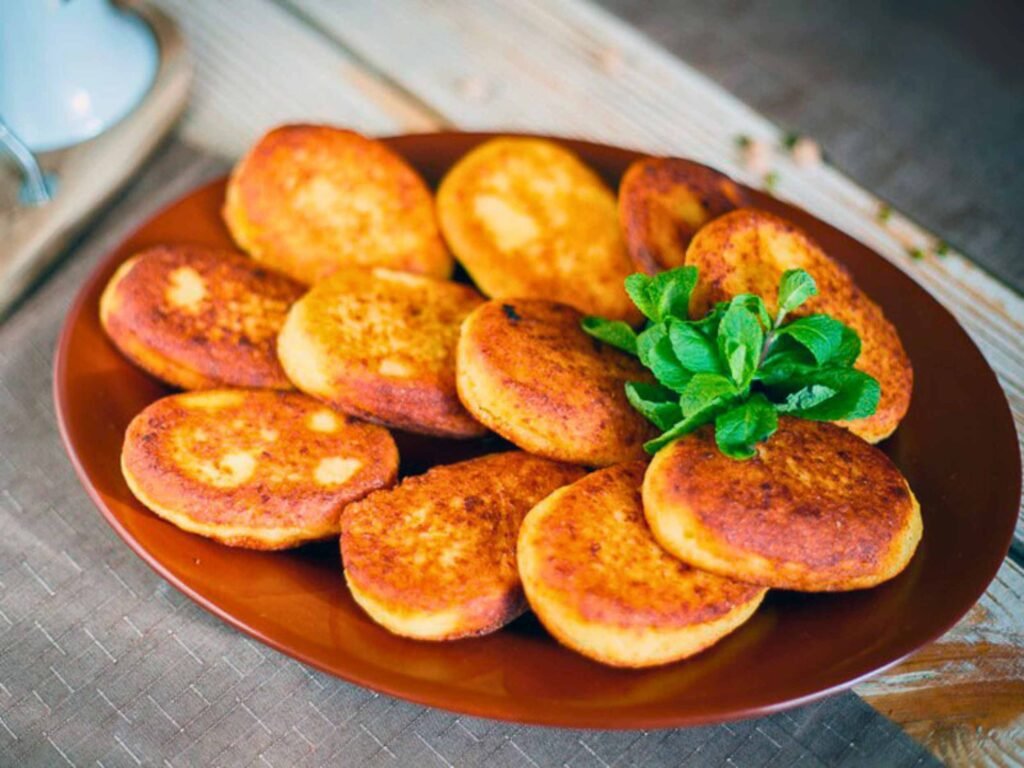
What is it?
A simple cornbread, often eaten with beans or cheese.
Why is it special?
It’s naturally gluten-free and has been a staple in western Georgia for centuries.
Who’s it for?
Perfect for gluten-free eaters and those who enjoy rustic breads.
8. Khinkali (Dumplings Filled with Vegetarian Goodness from Georgian Cuisine)
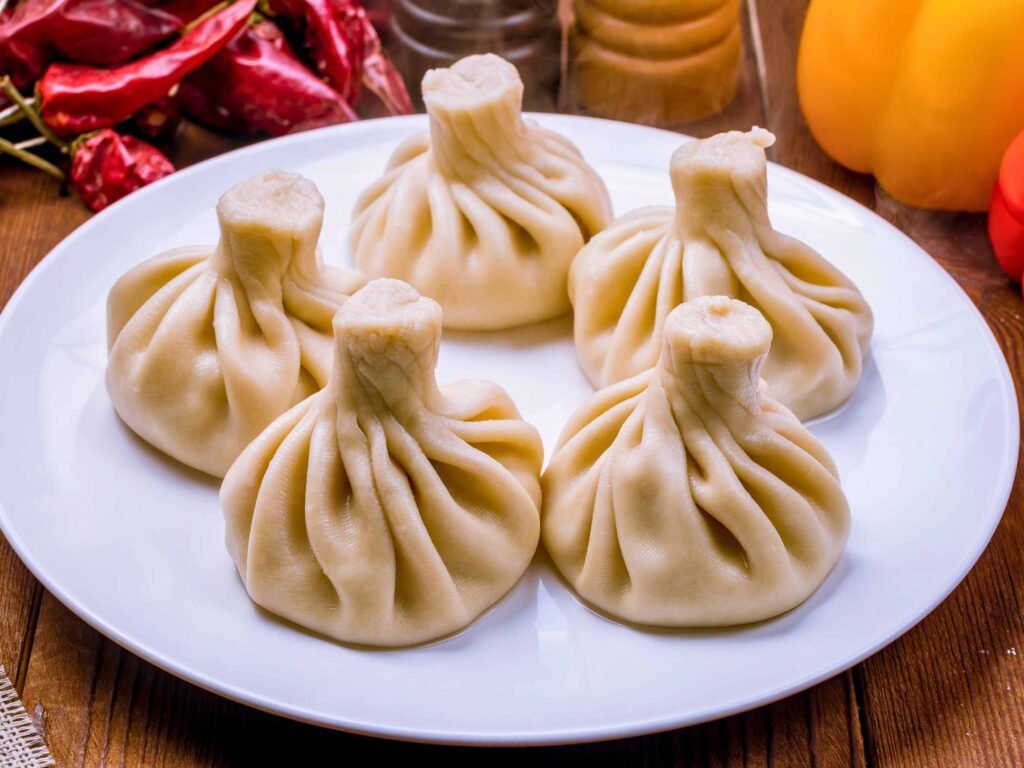
a. Mushroom Khinkali
What is it?
Dumplings filled with sautéed mushrooms, herbs, and sometimes onions.
Why is it special?
The mushrooms soak up the juices, making them as comforting as the traditional meat versions.
Who’s it for?
Vegetarians who don’t want to miss out on Georgia’s most famous dumpling.
b. Potato Khinkali
What is it?
Dumplings filled with mashed potatoes, butter, and herbs.
Why is it special?
It’s humble, hearty, and satisfying, reflecting Georgia’s rural traditions.
Who’s it for?
Ideal for potato lovers and those who enjoy pierogi-like flavours.
c. Cheese Khinkali
What is it?
Dumplings stuffed with Sulguni or Imeruli cheese, sometimes mixed with herbs.
Why is it special?
When steamed, the cheese turns deliciously gooey inside.
Who’s it for?
Best for anyone who enjoys molten cheese pockets.
9. Shoti (Shotis Puri) – Crisp & Fluffy Bread in Georgian Cuisine
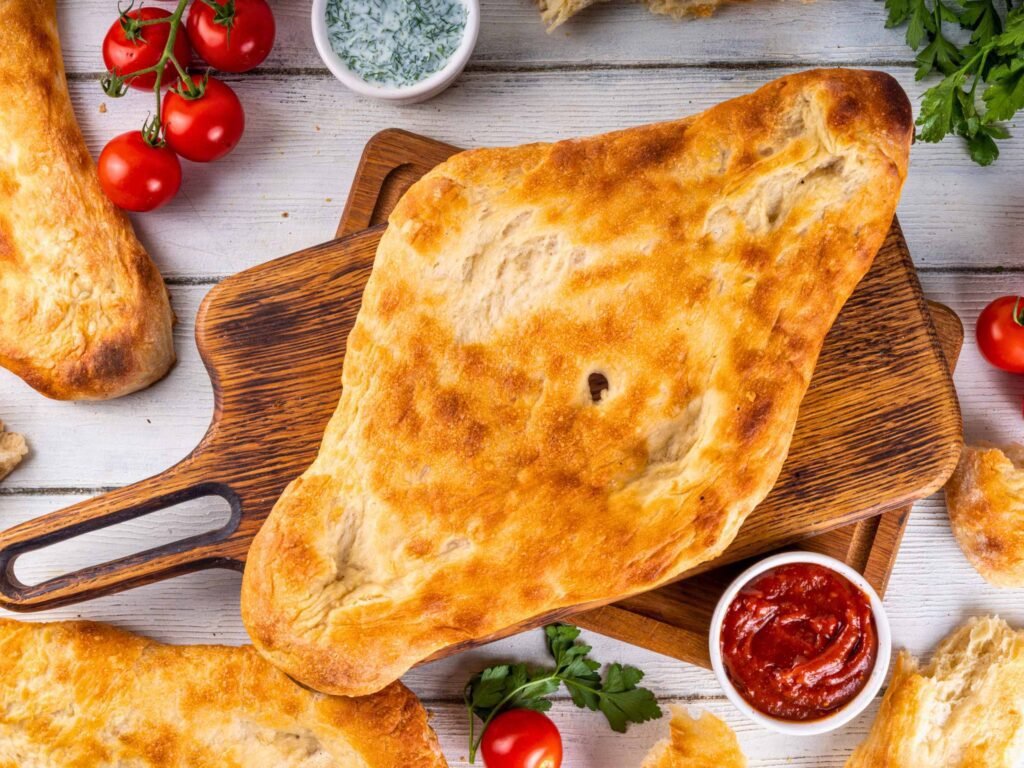
What is it?
A canoe-shaped flatbread baked in a tone (traditional clay oven).
Why is it special?
Its crisp crust and fluffy inside make it the backbone of Georgian meals.
Who’s it for?
Bread purists who appreciate simple but masterful baking.
Warm Mains & Stews from Georgian Cuisine
Moving beyond breads, Georgian kitchens offer a dazzling variety of warm mains. From rustic stews to sizzling mushroom dishes, these plates capture the soul of Georgian home cooking.
10. Ajapsandali – Ratatouille-Style Stew in Georgian Cuisine
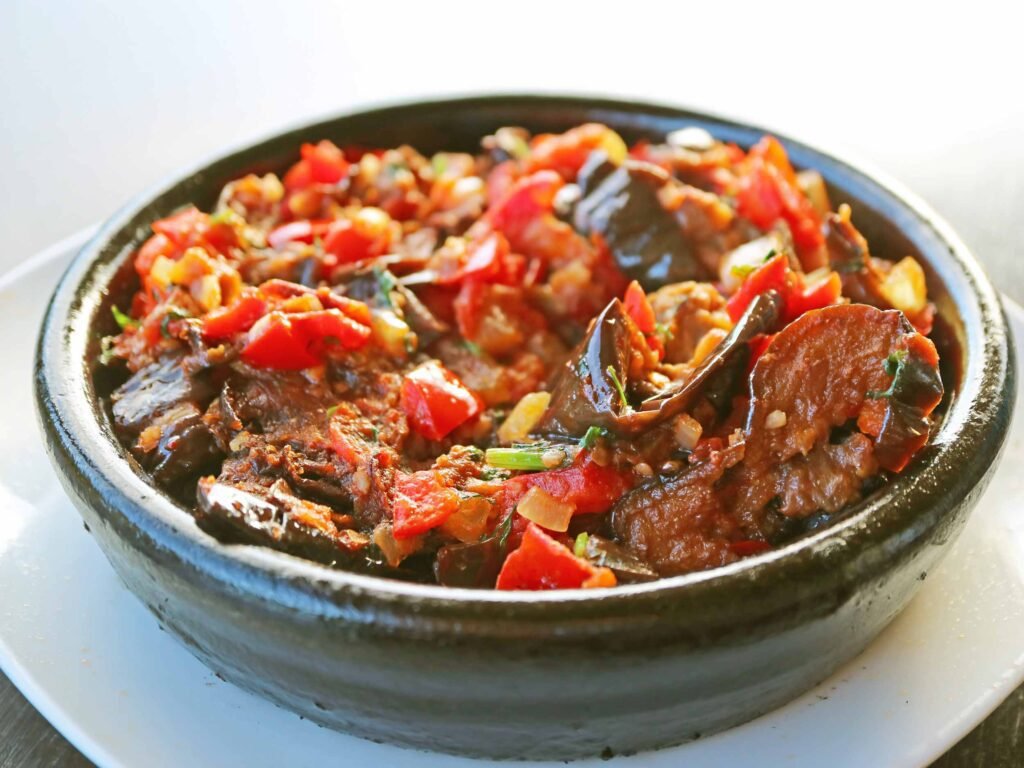
What is it?
A vegetable stew of eggplant, peppers, tomatoes, and potatoes, similar to ratatouille.
Why is it special?
It’s aromatic, healthy, and deeply spiced with fresh herbs.
Who’s it for?
Perfect for vegans, vegetarians, or anyone who loves Mediterranean-style stews.
11. Elarji – Stretchy, Cheesy Comfort Food of Georgian Cuisine
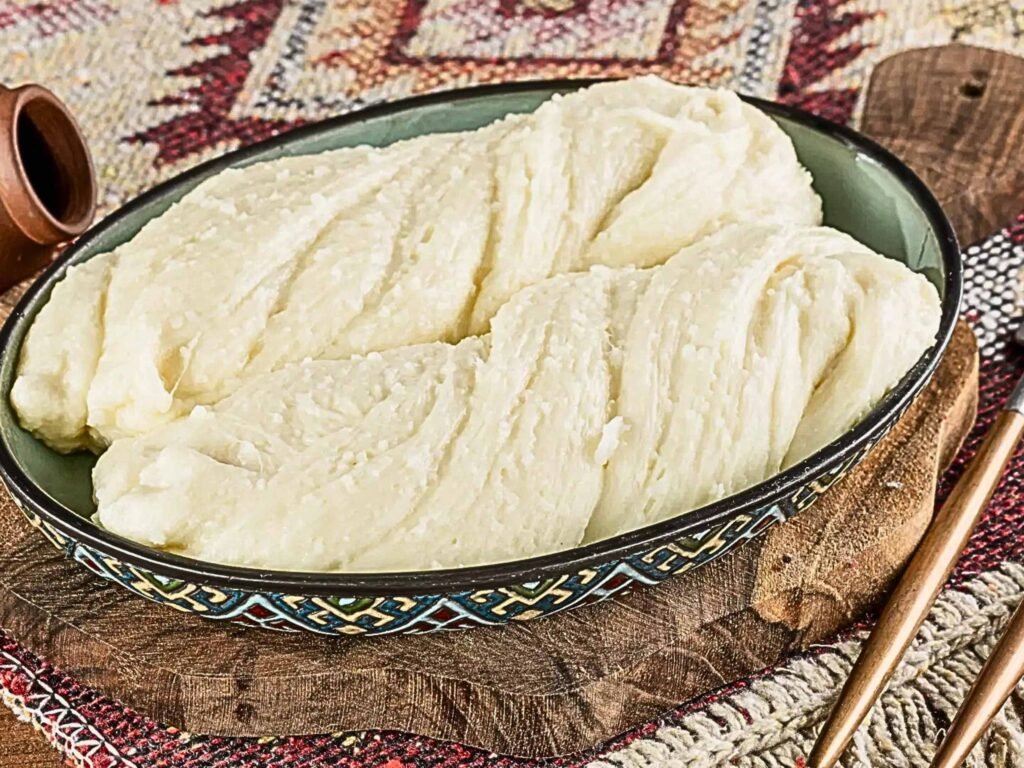
What is it?
A thick dish of cornmeal cooked with melted Sulguni cheese.
Why is it special?
The stretchy, cheesy texture is mesmerising and hearty.
Who’s it for?
Best for cheese enthusiasts and fans of polenta-like dishes.
12. Mushroom Ojakhuri – Rustic Georgian Cuisine Favourite
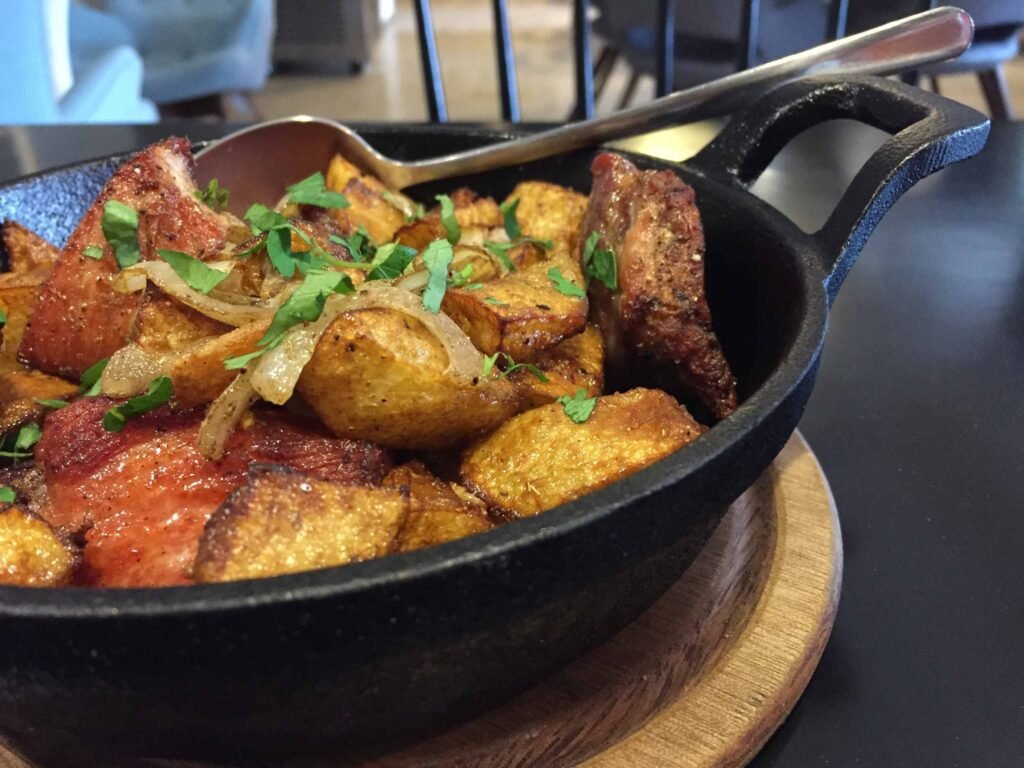
What is it?
Mushrooms roasted with potatoes and onions, served sizzling.
Why is it special?
The rustic preparation captures the essence of Georgian home cooking.
Who’s it for?
Great for those who enjoy simple, earthy flavours.
13. Potato Ojakhuri
What is it?
Roasted potatoes cooked with onions, herbs, and sometimes mushrooms.
Why is it special?
It’s a humble comfort food elevated with Georgian spices.
Who’s it for?
Perfect for potato fans and those who love hearty sides.
14. Vegetarian Chakapuli
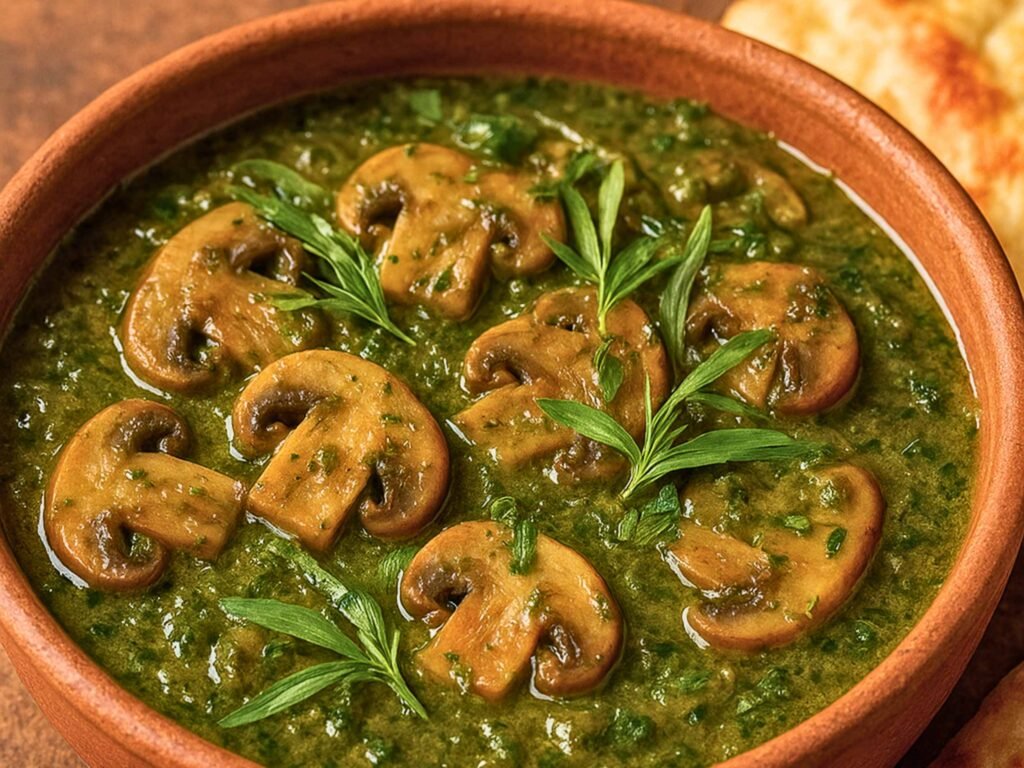
What is it?
Traditionally, a lamb stew, but this vegetarian version uses mushrooms or beans with tarragon.
Why is it special?
The strong herbal notes of tarragon make it unlike any other stew.
Who’s it for?
Ideal for herb lovers and anyone looking for a fresh twist on classic stews.
15. Mushroom Chashushuli
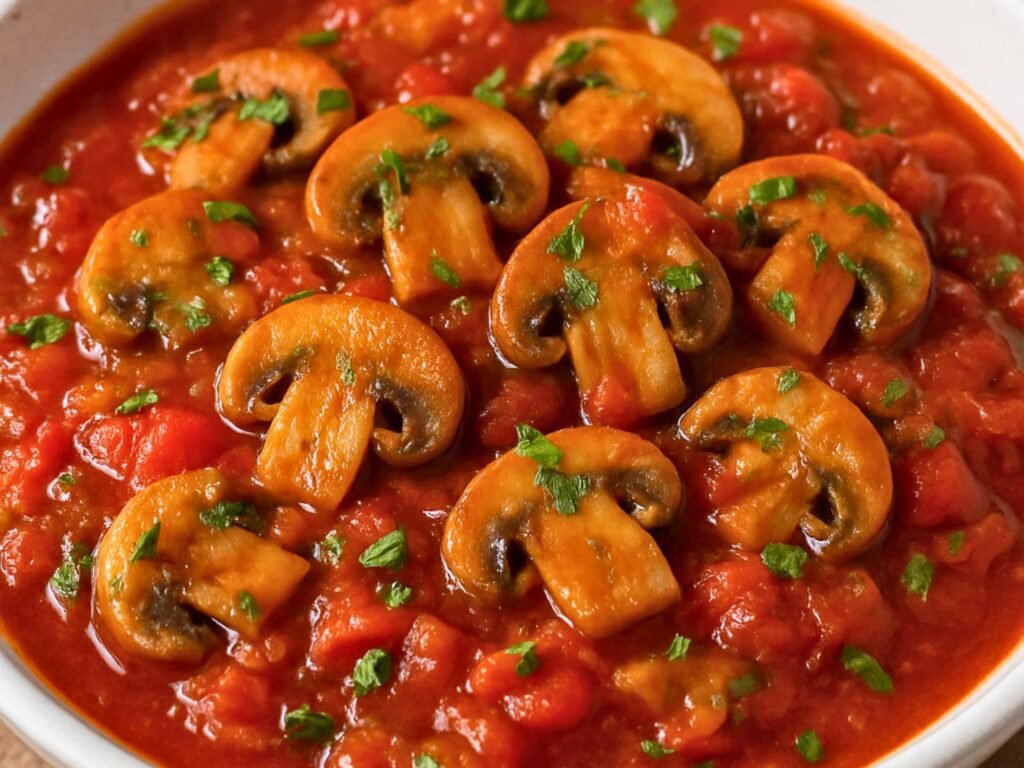
What is it?
A vegetarian twist on the traditional Chashushuli, which is usually a beef stew cooked with tomatoes, onions, and Georgian spices. In the vegetarian version, mushrooms replace the meat, but the flavours remain rich, tangy, and aromatic.
Why is it special?
The mushrooms absorb the rich tomato sauce beautifully.
Who’s it for?
For stew lovers who prefer lighter, plant-based options.
16. Hot Lobio
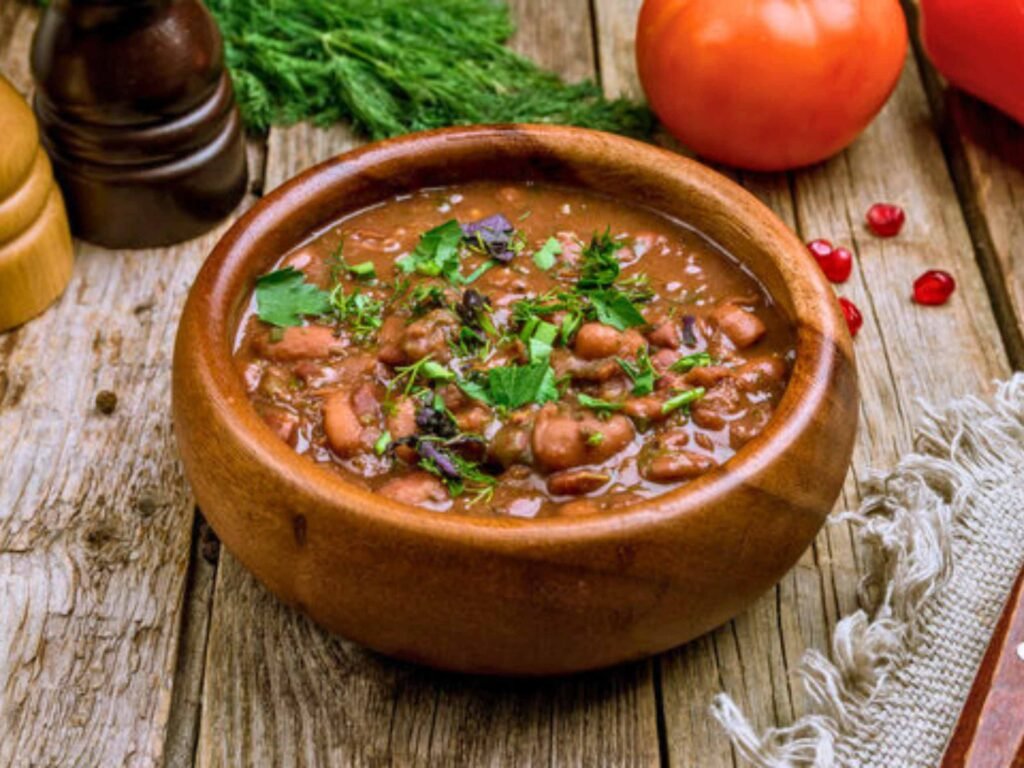
What is it?
A hot kidney bean stew flavoured with herbs and walnut paste.
Why is it special?
Cooked and served in clay pots, it has a smoky, rich depth.
Who’s it for?
A filling choice for vegetarians and bean lovers.
17. Mushrooms on Ketsi
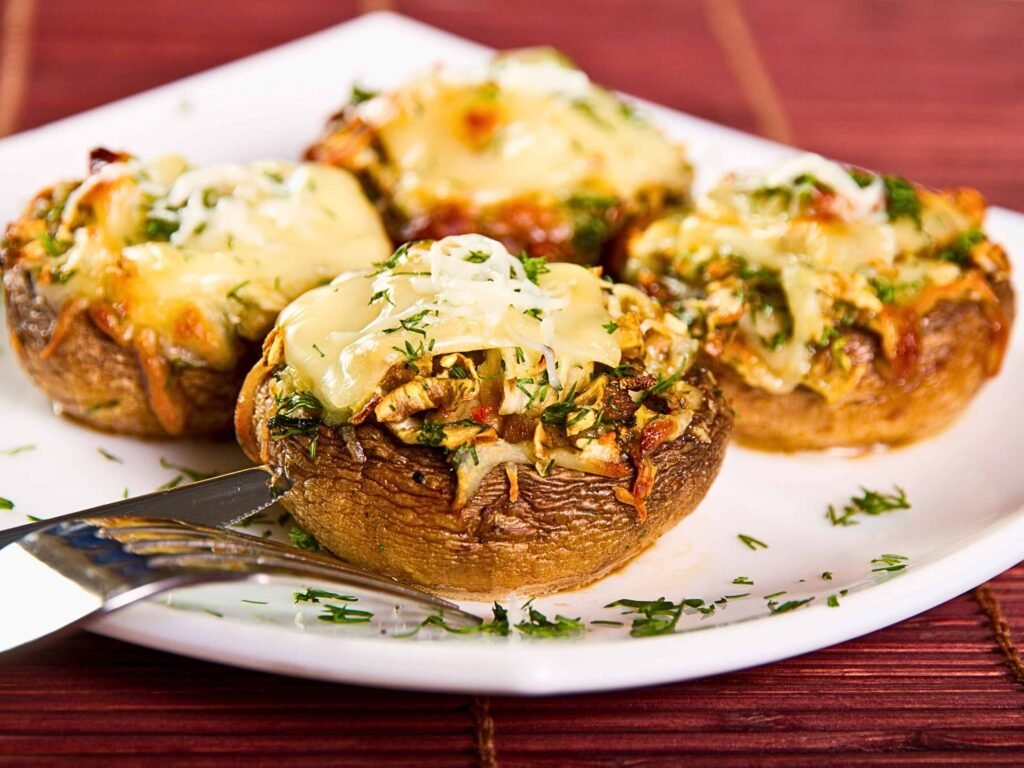
What is it?
Mushrooms stuffed with cheese, baked in a traditional clay pan.
Why is it special?
The ketsi adds a rustic flavour and keeps the dish piping hot.
Who’s it for?
For fans of sizzling, cheesy appetisers.
18. Soko Ketze with Garlic
What is it?
Whole mushrooms baked with garlic and butter in a clay dish.
Why is it special?
It’s simple, aromatic, and deeply comforting.
Who’s it for?
Perfect for garlic lovers and anyone craving a warm starter.
Traditional Desserts in Georgian Cuisine
No culinary journey through Georgia is complete without sweets. Rooted in the country’s ancient winemaking and festive traditions, these desserts balance natural ingredients with comforting flavours.
19. Churchkhela
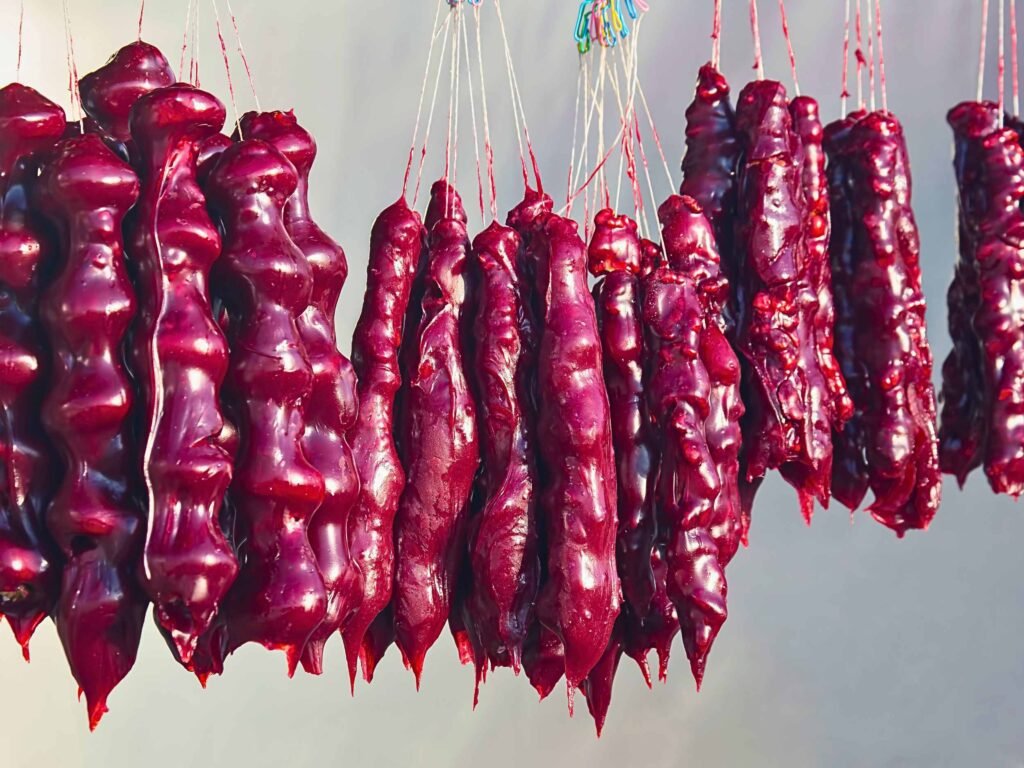
What is it?
Walnuts or hazelnuts strung on a thread and dipped in thickened grape juice.
Why is it special?
Often called the “Georgian Snickers,” it’s natural, portable, and sweet.
Who’s it for?
For snackers and those who prefer energy-packed, natural sweets.
20. Pelamushi
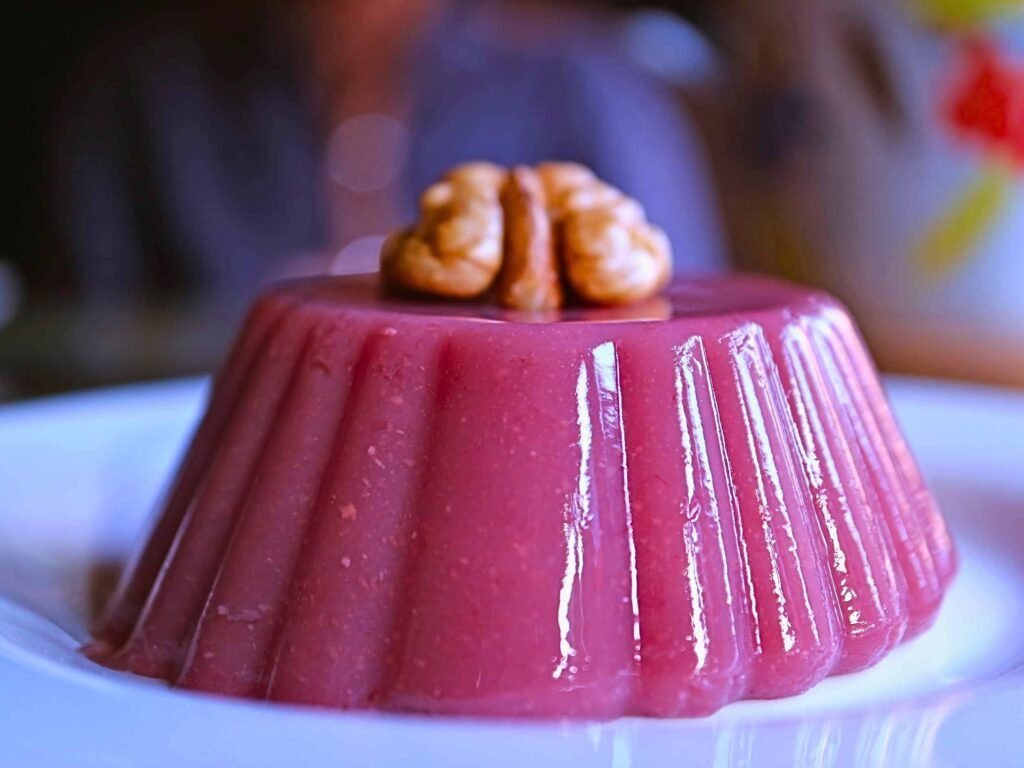
What is it?
A grape pudding made with grape juice and cornmeal.
Why is it special?
It’s silky, fruity, and reflects Georgia’s ancient winemaking culture.
Who’s it for?
Dessert lovers who enjoy fruit-based treats.
21. Tklapi
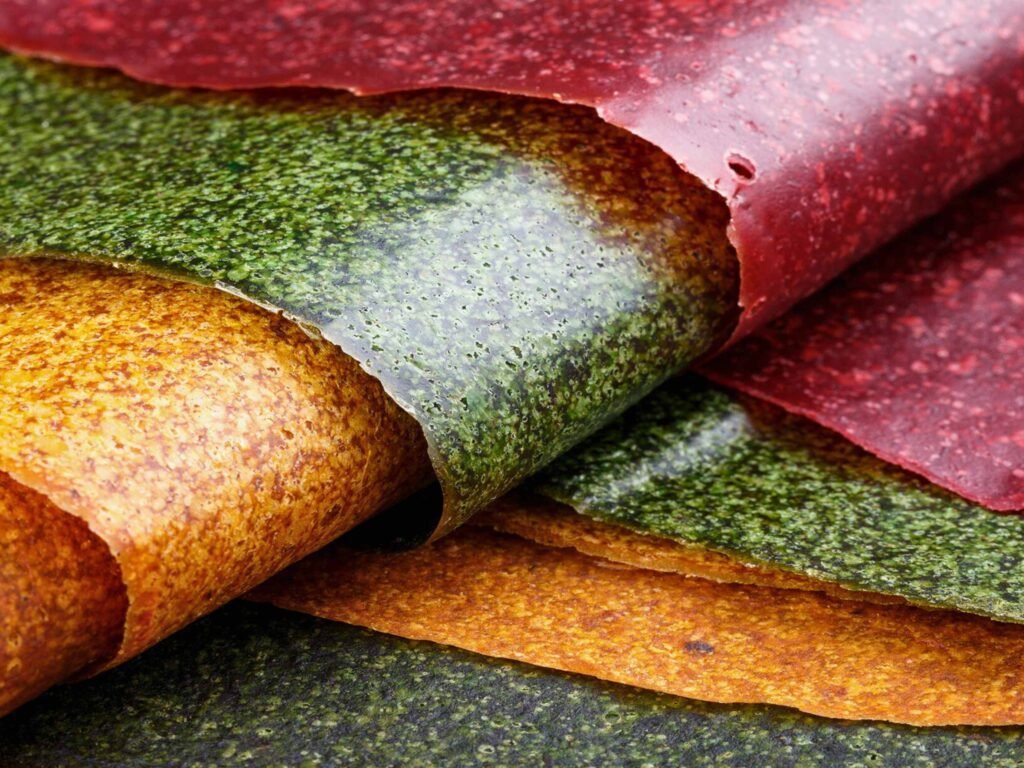
What is it?
Sheets of fruit leather made from pureed plums or apricots.
Why is it special?
It balances sweet and sour flavours beautifully.
Who’s it for?
Perfect for kids and travellers seeking a healthy snack.
22. Nazuki
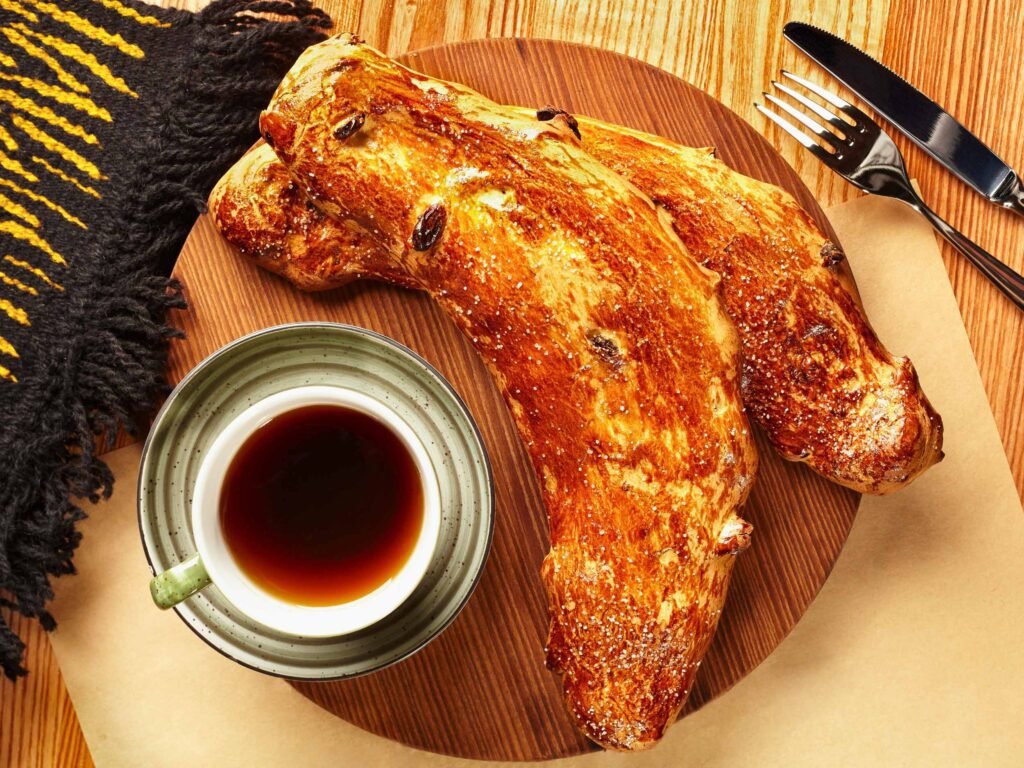
What is it?
A sweet, spiced bread is often sold roadside.
Why is it special?
Its cinnamon aroma makes it irresistible.
Who’s it for?
For bread lovers who enjoy festive flavours.
23. Gozinaki
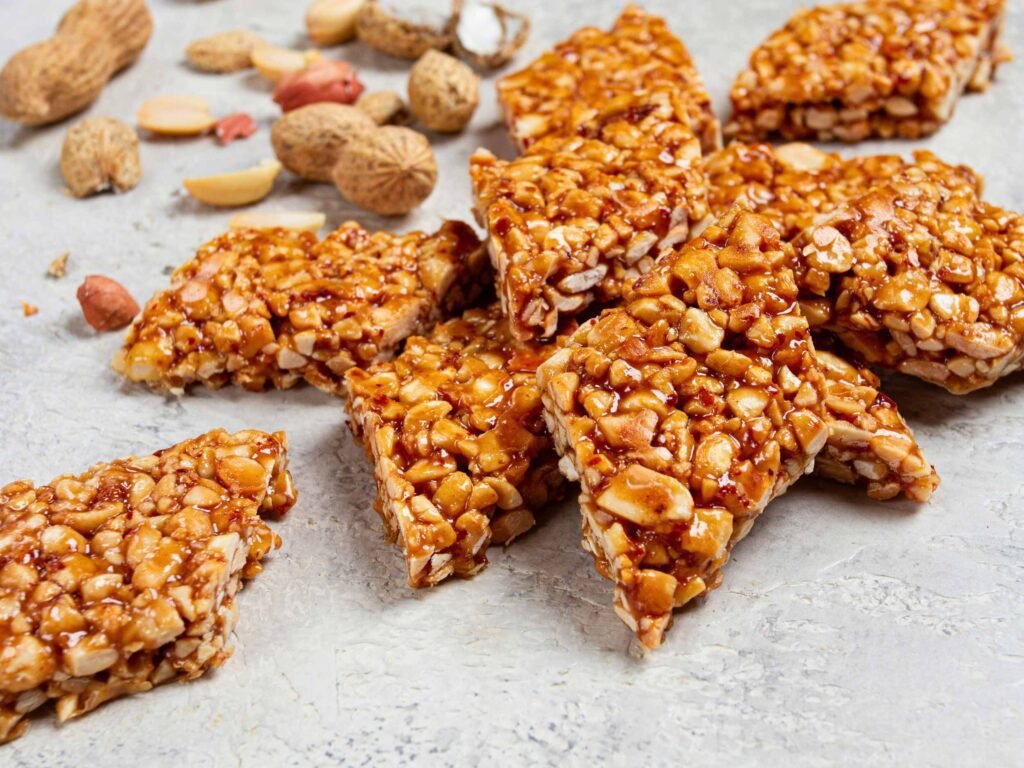
What is it?
Caramelised walnuts or other nuts set in honey.
Why is it special?
Traditionally made for New Year celebrations, it’s a sweet symbol of prosperity.
Who’s it for?
For nut brittle fans and those who love crunchy, golden sweets.
Conclusion
As a vegetarian, you’ll never feel like an outsider in Georgia. The cuisine welcomes you with open arms, offering dishes that comfort, surprise, and connect you to centuries of tradition.
Georgian cuisine goes far beyond the plate. It’s a living expression of culture, hospitality, and tradition. From the humblest cornbread to the most indulgent khachapuri overflowing with cheese, every dish tells the story of the land and its people.
Whether you’re vegan, vegetarian, or simply a devoted food lover, Georgia has a dish that will capture your heart. So taste, explore, and immerse yourself in a culinary journey where every meal celebrates flavour, warmth, and heritage. Join a guided trip to Georgia and experience firsthand how food here isn’t just eaten. It’s shared, remembered, and cherished.

